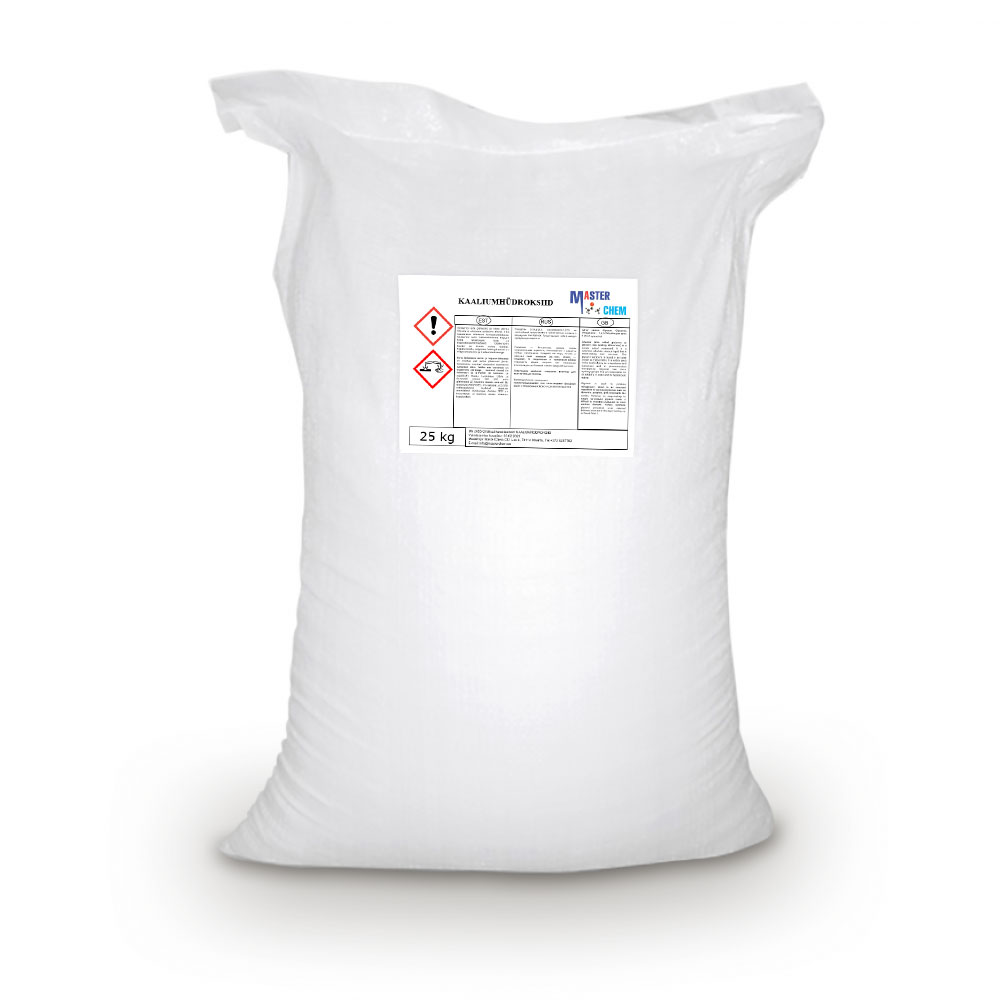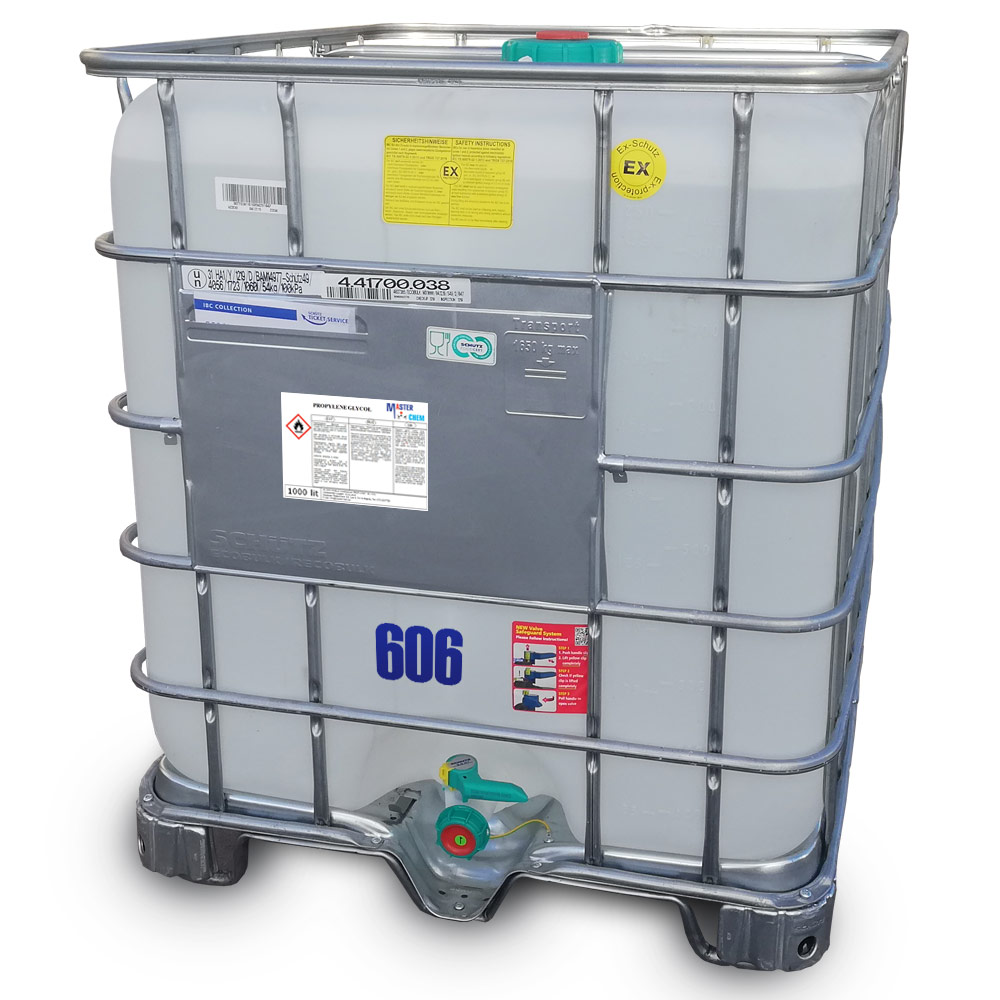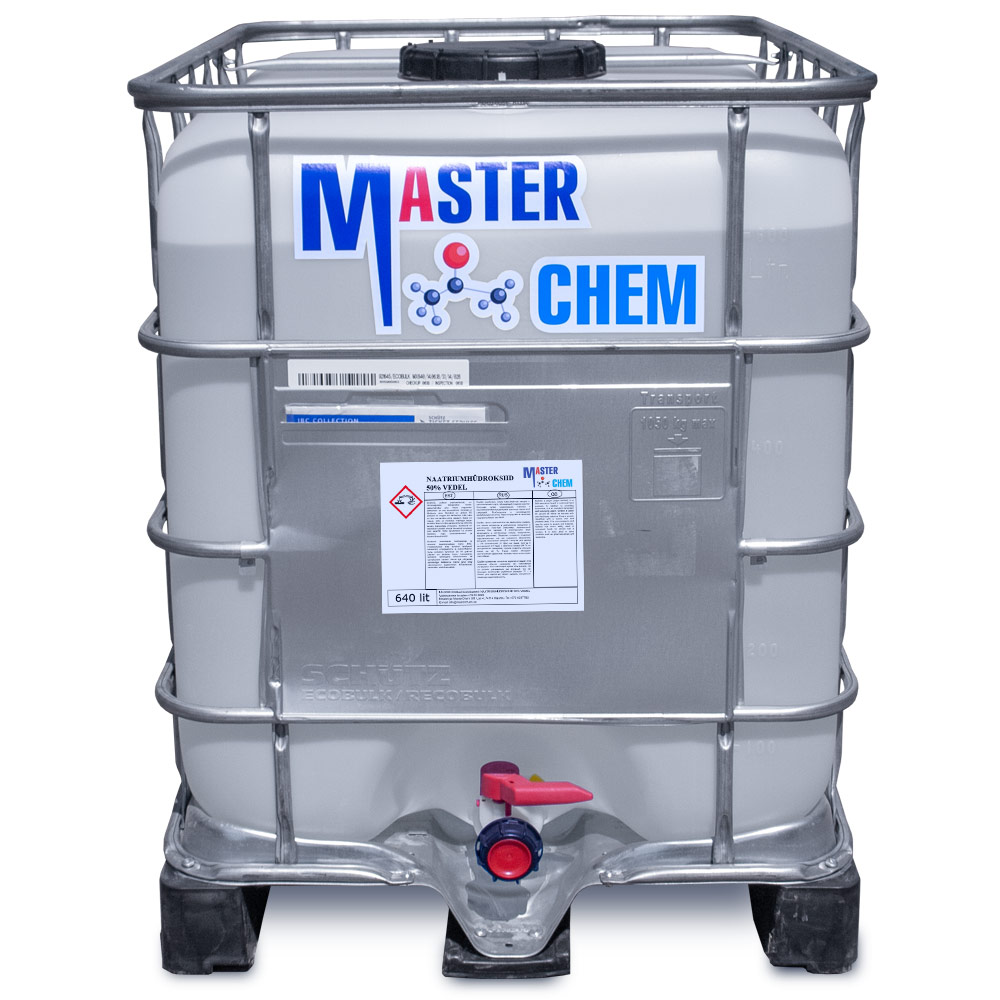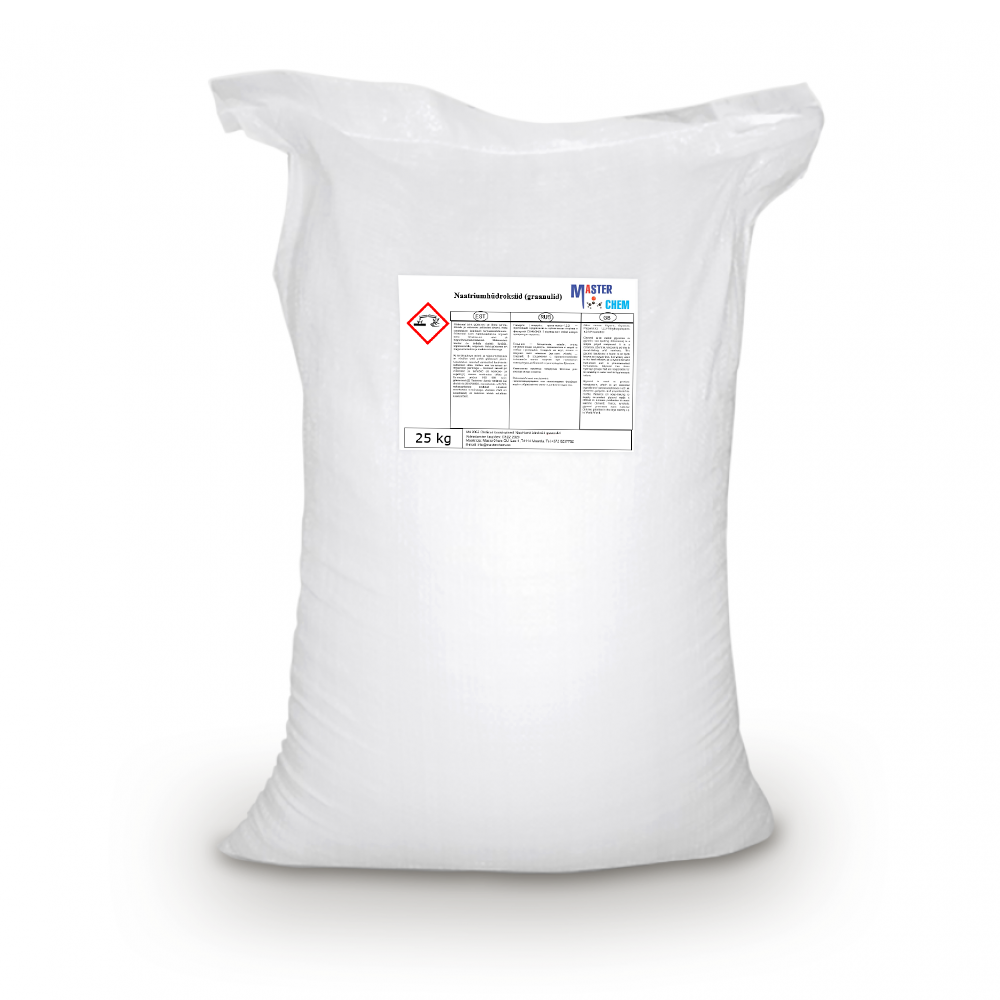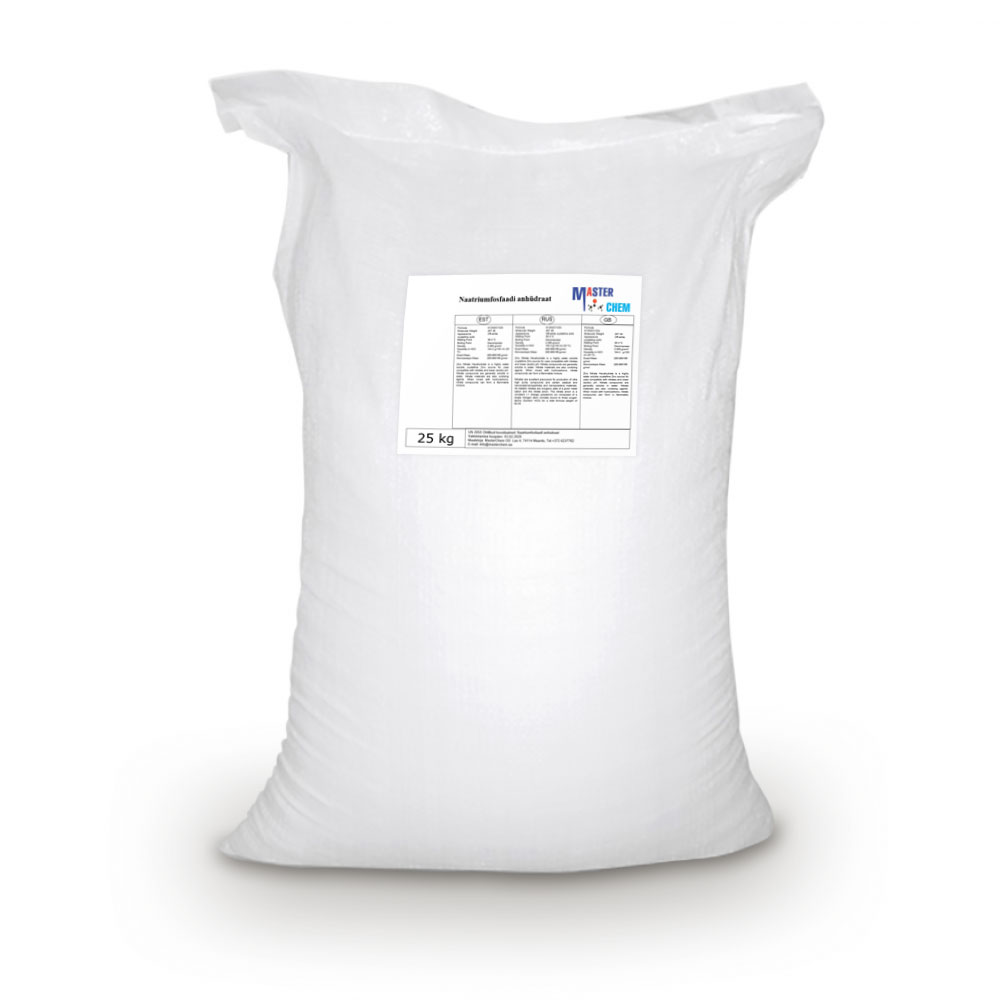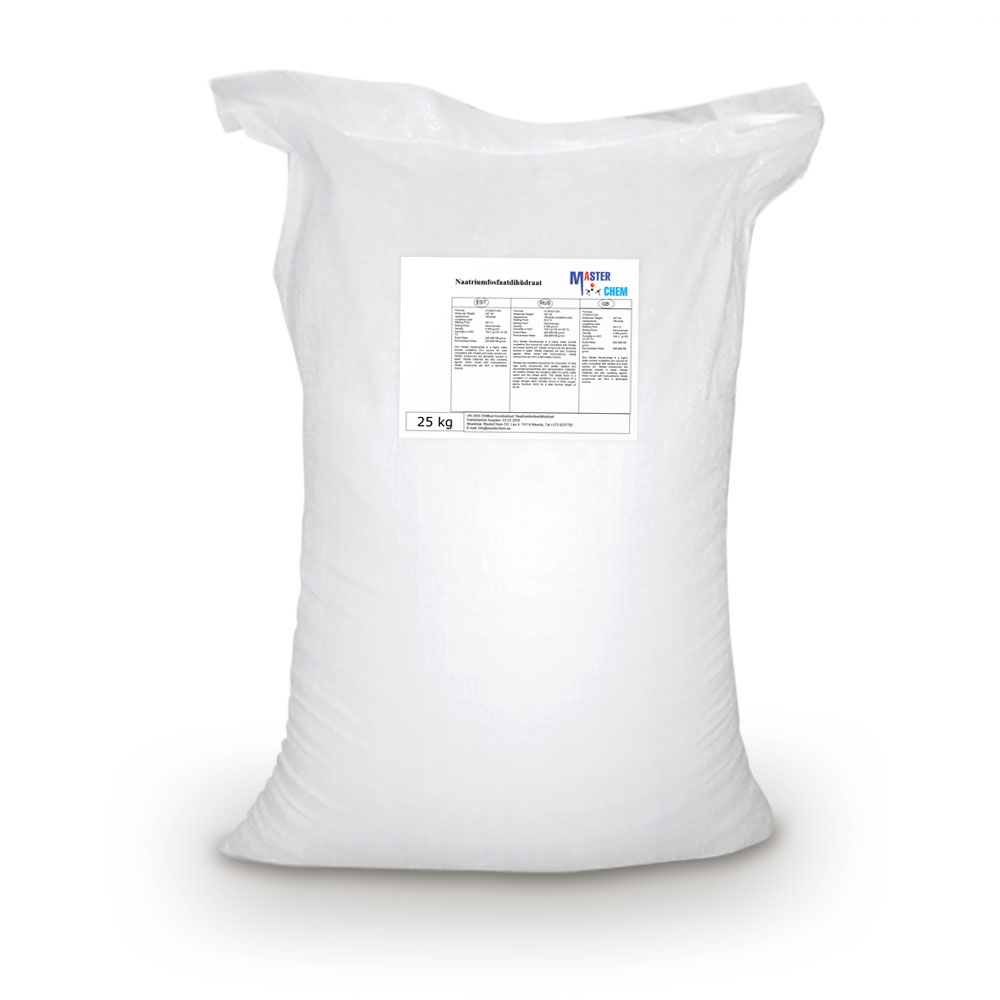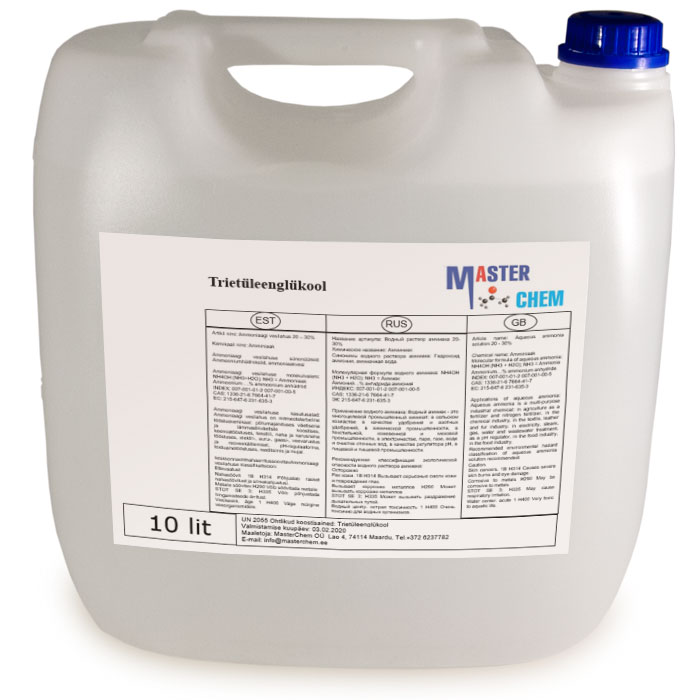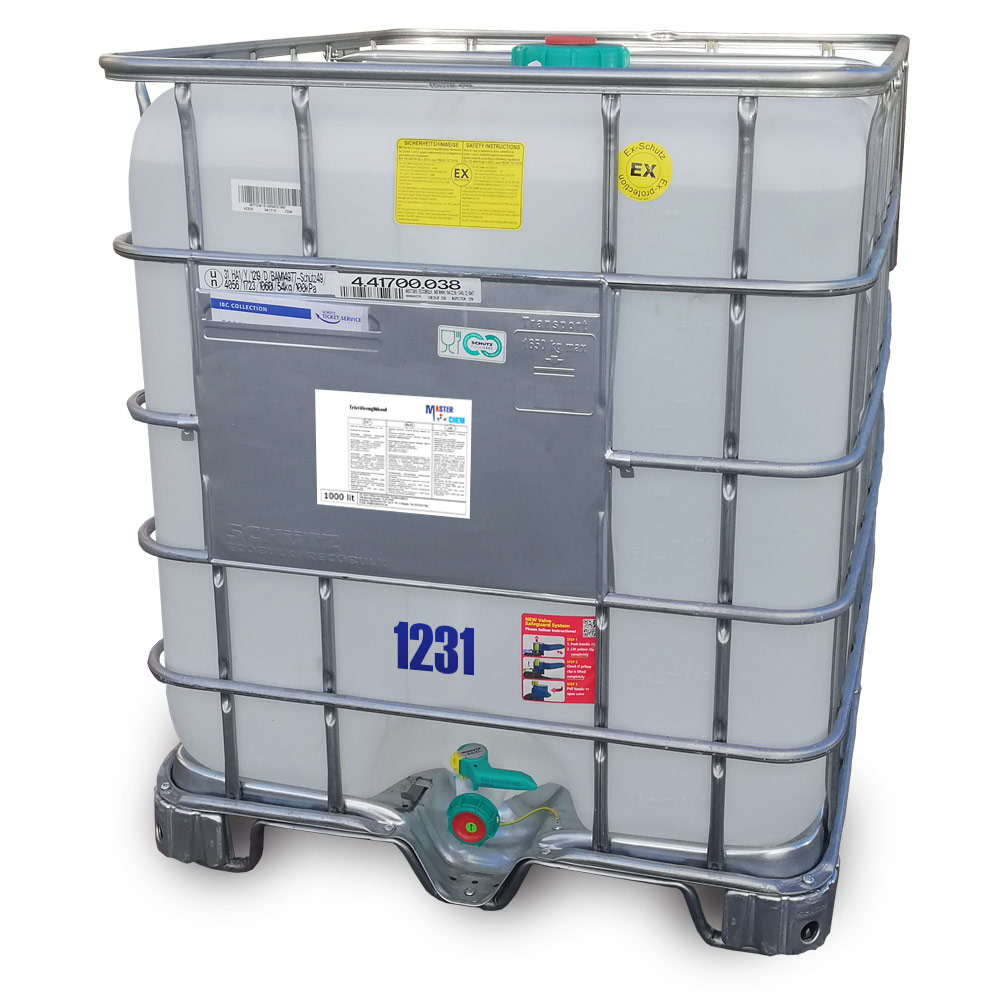Currently Empty: €0.00
Potassium hydroxide (flakes/granules) (CAS 1310-58-3)
Potassium hydroxide is an inorganic compound with the formula KOH, and is commonly called caustic potash.
Along with sodium hydroxide (NaOH), this colorless solid is a prototypical strong base. It has many industrial and niche applications, most of which exploit its caustic nature and its reactivity toward acids. An estimated 700,000 to 800,000 tonnes were produced in 2005. KOH is noteworthy as the precursor to most soft and liquid soaps, as well as numerous potassium-containing chemicals. It is a white solid that is dangerously corrosive. Most commercial samples are ca. 90% pure, the remainder being water and carbonates.
CAS: 1310-58-3
Potassium nitrate (CAS 7757-79-1)
Potassium nitrate (CAS 7757-79-1)
Potassium nitrate is a chemical compound with the chemical formula KNO3. It is an ionic salt of potassium ions K+ and nitrate ions NO3−, and is therefore an alkali metal nitrate. It occurs in nature as a mineral, niter (or nitre in the UK). It is a source of nitrogen, and nitrogen was named after niter. Potassium nitrate is one of several nitrogen-containing compounds collectively referred to as saltpetre (or saltpeter in North America).
Major uses of potassium nitrate are in fertilizers, tree stump removal, rocket propellants and fireworks. It is one of the major constituents of gunpowder (black powder). In processed meats, potassium nitrate reacts with hemoglobin and myoglobin generating a blue color.
Propylene glycol (CAS 57-55-6)
Other names: Propylene glycol, 1,2-propylene glycol, propane-1,2-diol
Propylene glycol (specifically 1,2-propylene glycol; chemical name propane-1,2-diol) is a chemical substance diols. Its chemical formula is C3H8O2 o HO–CH2–CHOH–CH3.
The substance is used, for example, in aircraft aviation to protect the fuselage from icing and in food as a moisture preservative. (E1520).
CAS: 57-55-6
Sodium hydroxide (50% liquid) (CAS 1310-73-2)
Use of sodium hydroxide 50%: Manufacture of pulp, paper and paper products.
CAS: 1310-73-2
Sodium hydroxide granules (CAS 1310-73-2)
Sodium hydroxide 100% application: Chemical, food, textile, pulp and paper and various other applications.
CAS: 1310-73-2
Sodium molybdate (CAS 7631-95-0)
Sodium molybdate (CAS 7631-95-0)
Sodium molybdate, Na2MoO4, is useful as a source of molybdenum. This white, crystalline salt is often found as the dihydrate, Na2MoO4·2H2O.
The molybdate(VI) anion is tetrahedral. Two sodium cations coordinate with every one anion.
It is used in industry for corrosion inhibition, as it is a non-oxidizing anodic inhibitor. The addition of sodium molybdate significantly reduces the nitrite requirement of fluids inhibited with nitrite-amine, and improves the corrosion protection of carboxylate salt fluids. In industrial water treatment applications where galvanic corrosion is a potential due to bimetallic construction, the application of sodium molybdate is preferred over sodium nitrite. Sodium molybdate has the advantage in that the dosing of lower ppm’s of molybdate allow for lower conductivity of the circulating water. Sodium molybdate at levels of 50-100 ppm offer the same levels of corrosion inhibition as sodium nitrite at levels of 800+ ppm. By utilizing lower concentrations of sodium molybdate, conductivity is kept at a minimum and thus galvanic corrosion potentials are decreased.
Sodium nitrate (CAS 7631-99-4)
Sodium nitrate (CAS 7631-99-4)
Sodium nitrate is the chemical compound with the formula NaNO3. This alkali metal nitrate salt is also known as Chile saltpeter (large deposits of which were historically mined in Chile) to distinguish it from ordinary saltpeter, potassium nitrate. The mineral form is also known as nitratine, nitratite or soda niter.
Sodium nitrate is a white deliquescent solid very soluble in water. It is a readily available source of the nitrate anion (NO3−), which is useful in several reactions carried out on industrial scales for the production of fertilizers, pyrotechnics and smoke bombs, glass and pottery enamels, food preservatives (esp. meats), and solid rocket propellant. It has been mined extensively for these purposes.
Sodium Phosphate Anhydrate (CAS 7558-80-7)
Sodium Phosphate Anhydrate (CAS 7558-80-7)
Monosodium phosphate (MSP), also known as monobasic sodium phosphate and sodium dihydrogen phosphate, is an inorganic compound of sodium with a dihydrogen phosphate (H2PO4−) anion. One of many sodium phosphates, it is a common industrial chemical. The salt exists in an anhydrous form, as well as mono- and dihydrates.
Phosphates are often used in foods and in water treatment. The pH of such formulations is generally adjusted by mixtures of various sodium phosphates, such as this salt. The sodium chloride equivalent value, or E-Value, is 0.49. It is soluble in 4.5 parts water.
Sodium Phosphate Dihydrate (CAS 13472-35-0)
Sodium Phosphate Dihydrate (CAS 13472-35-0)
Sodium phosphate is a generic term for a variety of salts of sodium (Na+) and phosphate (PO43−). Phosphate also forms families or condensed anions including di-, tri-, tetra-, and polyphosphates. Most of these salts are known in both anhydrous (water-free) and hydrated forms. The hydrates are more common than the anhydrous forms.
Triethylene glycol (CAS 112-27-6)
Triethylene glycol (CAS 112-27-6)
Triethylene glycol, TEG, or triglycol is a colorless odorless viscous liquid with molecular formula HOCH2CH2OCH2CH2OCH2CH2OH. It is used as a plasticizer for vinyl polymers. It is also used in air sanitizer products, such as “Oust” or “Clean and Pure”. When aerosolized it acts as a disinfectant. Glycols are also used as liquid desiccants for natural gas and in air conditioning systems. It is an additive for hydraulic fluids and brake fluids and is used as a base for “smoke machine” fluid in the entertainment industry.
Triethylene glycol is a member of a homologous series of dihydroxy alcohols. It is a colorless, odorless and stable liquid with high viscosity and a high boiling point. Apart from its use as a raw material in the manufacture and synthesis of other products, TEG is known for its hygroscopic quality and its ability to dehumidify fluids. This liquid is miscible with water, and at standard atmospheric pressure (101.325 kPa) has a boiling point of 286.5 °C and a freezing point of -7 °C. It is also soluble in ethanol, acetone, acetic acid, glycerine, pyridine, aldehydes; slightly soluble in diethyl ether; and insoluble in oil, fat and most hydrocarbons.
Trisodium Phosphate Dodecahydrate (CAS 10101-89-0)
Trisodium Phosphate Dodecahydrate (CAS 10101-89-0)
Sodium phosphate tribasic dodecahydrate is also known as trisodium phospate or TSP. It is a highly soluble in water and widely used as a cleaning agent. The pH of a 1% solution is typically around 12, making this reagent sufficiently alkaline for saponification of grease and oils. In combination with surfactants, TSP is an excellent agent for cleaning everything from laundry to concrete driveways. This versatility and low manufacturing price made TSP the basis for a plethora of cleaning products sold in the mid-20th century. Trisodium phosphate is used in the isolation of mycobacteria, including culturing of tubercle bacilli. Has been used as a protein precipitant in certain applications and in co-precipitation and fractionization of nucleotides. May be used for the preservation of biologically active soil samples. Because of the alkaline pH, TSP disrupts cytoplasmic and outer membranes of Salmonella enterica cells making it useful in preventing the spread of bacteria.It is used in photographic developing, clarifying sugar, removing boiler scale, softening water and manufacturing of paper. They are added to many foods as an emulsifier to prevent oil separation. It can be utilized as a leavening agent. Some instances of these foods include the batter coating on breaded fish or chicken, and commercially baked cakes. Adding this item to food increases the shelf life of the food, maintaining the texture and visual aspect of the food.

